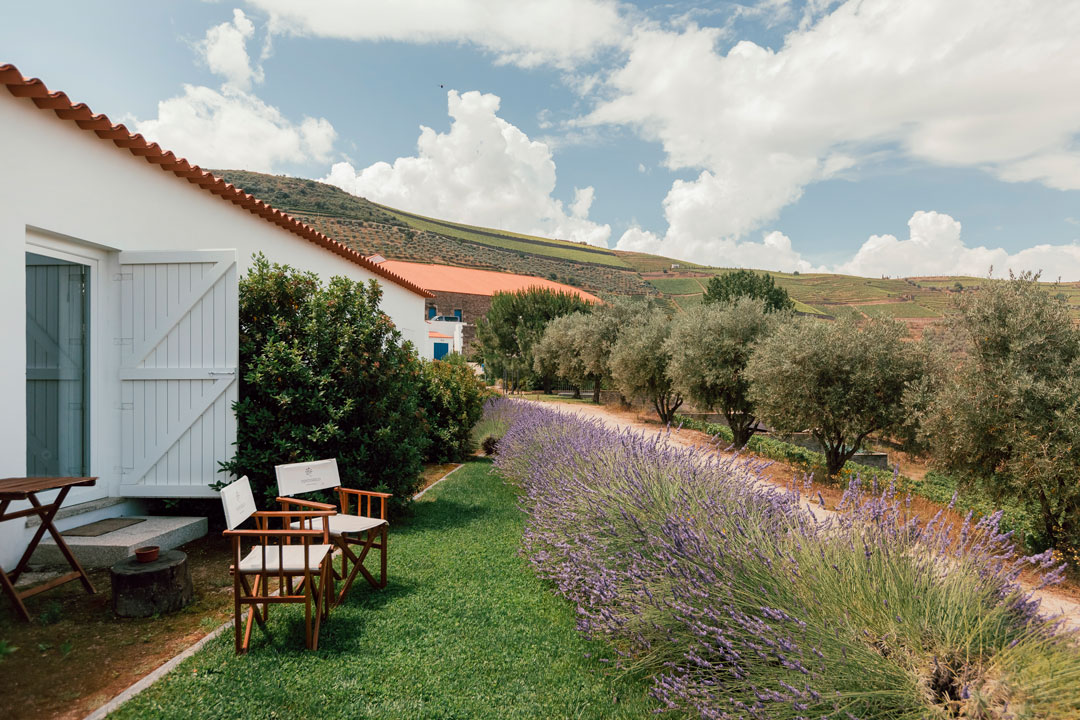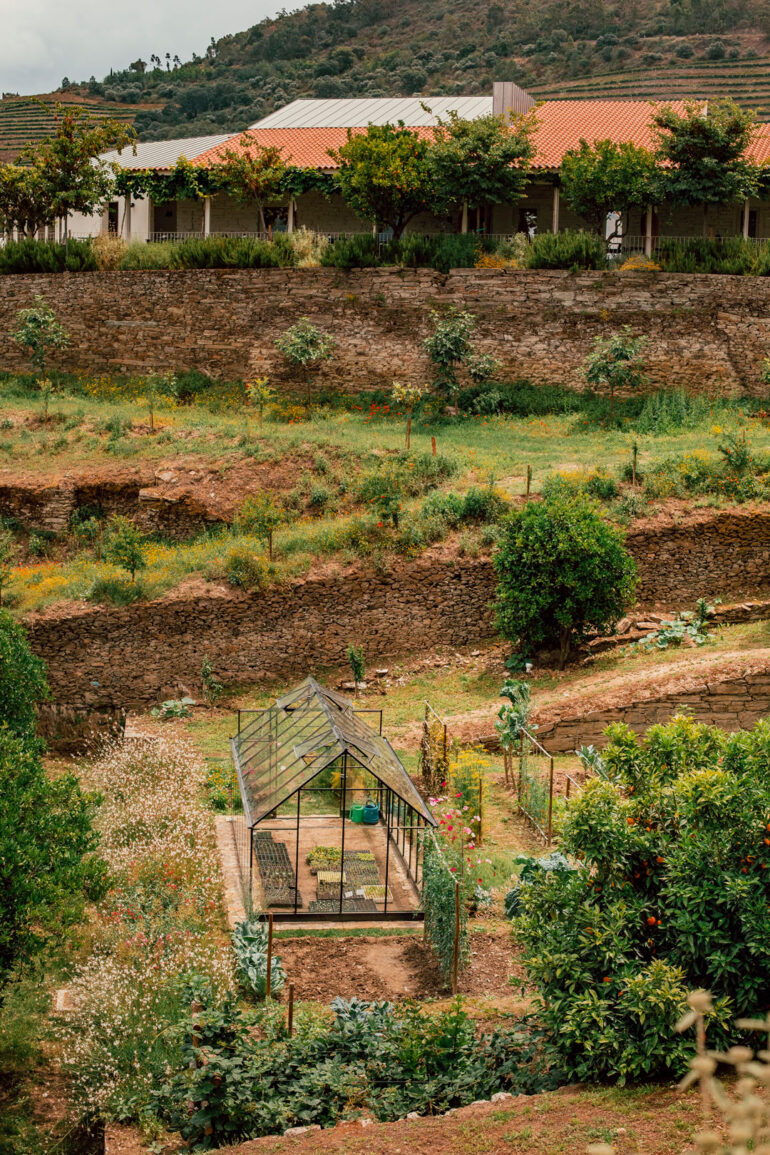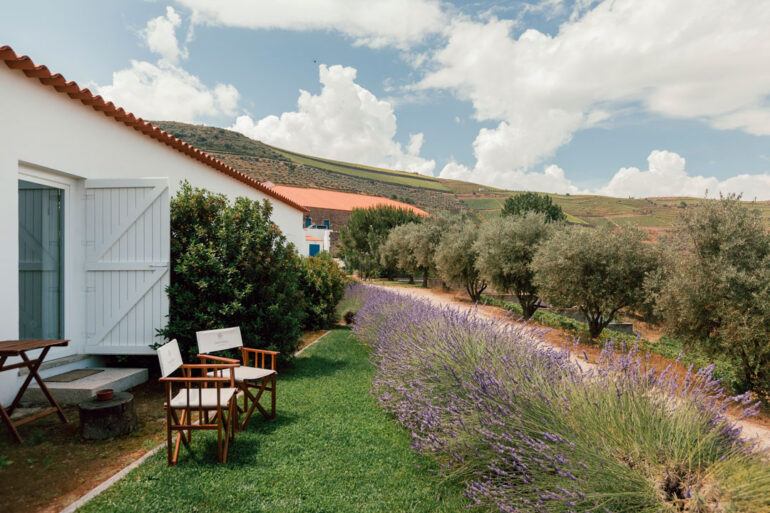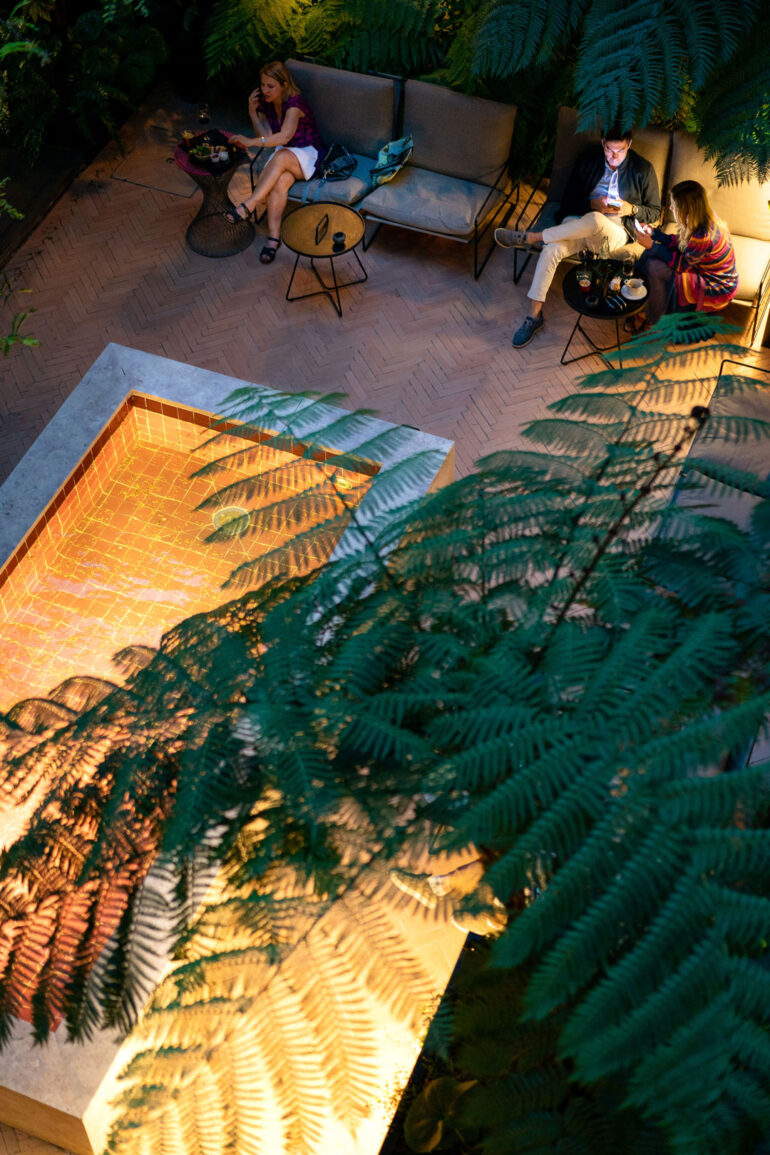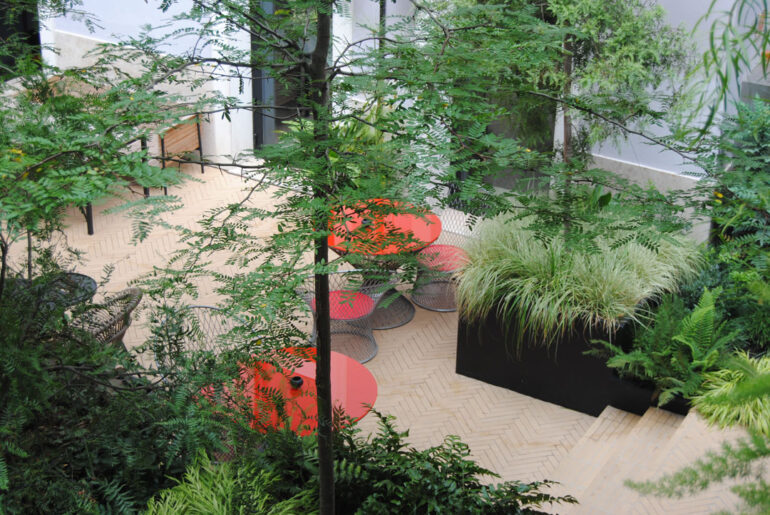www.joaobicho.com
Words: Joana Jervell
Working mainly in the Douro and Alto Alentejo regions, João Bicho has dedicated two decades to landscape architecture. A painstaking and patient activity, he admits (because he is dealing with living organisms that require attention and, above all, time) he sees as an opportunity to create beauty and combine it with functionality. We learn a little more about his passion, which takes him all over the country to create flower and kitchen gardens.
Q: What caused you to “embrace” the landscape aspect of architecture? How did you get here?
A: I remember when it happened. While I was recovering from an accident, I read Professor Francisco Caldeira Cabral’s book “The Foundations of Landscape Architecture”. As I read it, I thought to myself, this is what I want to do. Shortly afterwards, sometime in August 1999, I applied to change my course from agricultural engineering to landscape architecture. I started work in June or July 2004, a few days after receiving my final exam results.
Twenty years have passed, and I’m wholly convinced that I made the right decision.
Q: What are the main characteristics of this job of which most people are unaware?
A: Landscape architecture work is mainly outdoors and there are two important aspects. On the one hand, plants are living things and are therefore fragile and need care; on the other, we work with time, because plants need time to grow and establish themselves.
It’s important to keep this in mind as we work. We know we’re not going to get immediate results, and that can be frustrating at first, but we learn to look at things differently.
Q: How varied are the projects you work on?
A: We work on different scales, ranging from as small as a plant pot to as large as an estate! This plasticity is important in ensuring we don’t repeat solutions and that we are always looking for new ways to solve the problems we come across. Above all, it ensures that we never get bored.
Q: How do you approach each project?
A: Always visit the site, if possible. It’s very important to understand the peculiarities of each space and each client.
Then we look at the surroundings to see which plants can help us understand the characteristics of the climate, which is something you can’t do remotely. I also have to touch the soil, smell it and feel its texture, which is useful for understanding more practical agronomic aspects, without ignoring analytical methods — but it makes it easier to read the terrain.
Then there’s the project approach, which of course incorporates all the information gathered in the field, which is then transferred to paper, almost always at a reduced scale to allow for a more comprehensive approach.
Finally, we make endless lists of plans and references to give us more conceptual freedom. From there, we start to draw and incorporate into the designs all the constraints and difficulties that will show us the way forward.
Q: What are the biggest challenges you face in your work?
A: The main challenge is being able to respond to each client.
I’ll give you a example of a garden we did 10 years ago in a space the client hadn’t used before. What made us most happy was when, once the job was completed, the client told us his children always went into the garden when they came home. This ownership of the garden by people is one of the greatest rewards we can receive.
Q: A project that particularly impressed you and why?
A: I am particularly fond of two, not just one. The Valverde Hotel in Lisbon, because it’s a space we’ve worked on from the design stage to construction, and is one we still maintain today, because it’s always a challenge to manage the plants and the shade, and because it’s a charming space in the heart of the city. And Quinta do Ventozelo, because it’s also a space we’ve worked on from design to construction, and is also one we continue to supervise, with the advantages of having a fantastic kitchen garden and of being able to work in the breathtaking Douro landscape.
Q: How do you see the role and contribution of landscape architecture in today’s increasingly concrete-clad societies?
A: Landscape architecture can help balance urban space at different scales, but it also can and does excel in working with vegetation, especially trees, to ensure the most appropriate and durable solutions.
We don’t use trees because they are a pretty colour or have a nice shape; we work with them and other plants with a deep understanding of what they are, how they are installed and how they can grow. We can find solutions to make tree planting compatible with the most challenging of spaces. Unfortunately, landscape architecture is not always given enough space to demonstrate how we can have better cities.
Q: And on a more personal level, in our wellbeing as individuals?
A: I think small gardens can play an important role here, and I would say that kitchen gardens, more than flower gardens, can contribute to our well-being in many ways. First, because we can change the way we eat and especially the way we look at our food; and second, because it’s extremely rewarding to be able to produce your own food. These spaces may be important for the individual, but they are especially important for the family. When everyone is able to participate in the garden in some way, a lot changes in the way we relate to spaces, whether or not they are productive.
Q: What are your thoughts on the growing trend of young people leaving big cities behind in favour of a more sustainable, back-to-basics lifestyle connected to the land?
A: I live in Vila Real, outside the major urban centres, and I believe firmly that the quality of life we can enjoy here is far better than in any big city. That’s why I hope this trend continues. It’s becoming increasingly feasible with new ways of working, as more and more young people opt for hybrid and remote work arrangements. These days, there are more opportunities to improve your quality of life and leave big cities behind; however, I’m not sure if most small towns and villages in rural areas are ready for this change.
There’s still a lot to be done. Essential services like healthcare, education and transport links are crucial for this movement to succeed, not to mention internet connectivity, which is sometimes absolutely dire.
Q: Are we creating “greener” societies and communities that are more in tune with nature?
A: Concern for nature and ecology is nothing new. However, as climate change becomes increasingly evident, we all feel the pressure to do our bit — whether that’s changing our habits or rethinking how we use resources and manage our landscape. Legislation is also moving in this direction.
I believe our approach to planning has evolved, and that we’re now seeing projects that incorporate native vegetation to create woodland areas and natural habitats that provide wildlife sanctuaries and, importantly, break up large agricultural spaces. But we can no longer view these as mere design solutions; we need to frame our work in terms of promoting biodiversity and carbon sequestration, and ensure it can be properly measured in sustainability reports. We’re also helping to reduce herbicide use by promoting native vegetation on hillsides and marginal areas. These spaces are crucial for ecosystems and play a vital role in achieving sustainable development goals and meeting carbon capture targets. We need to align with initiatives like the European Green Deal and the Nature Restoration Law. Looking ahead, we believe agricultural and forest areas will become increasingly important, and understand the way these initiatives are funded will need to evolve.
Q: Working with the land will always be synonymous with…
A: Generosity, because not only does it create beauty that everyone can admire, but it also sustains us.

